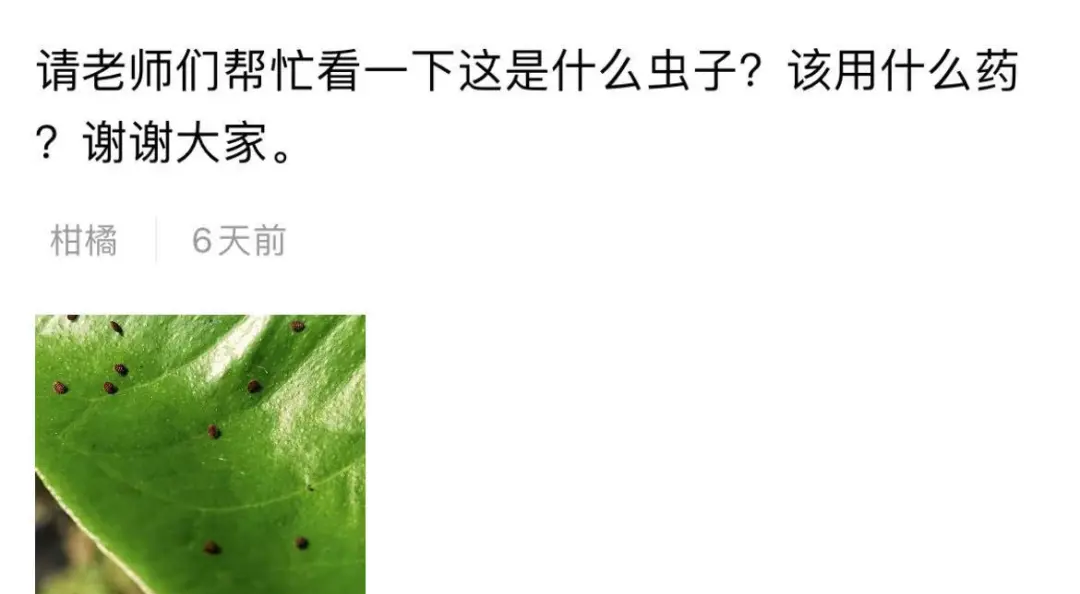Recently, many friends are asking, citrus leaves attached to some jujube red, oval "small insects", want to ask how to control? How to use the drug?

Judging from the comments, in addition to a small number of people who think that it is a red spider, most of the comments speculate that it is some kind of shell worm, and there is a similar look...
The so-called red "little bug"
Red Spider
Mesophora (blowing nymph)
Here are some comparison charts for all farmers to identify.
From the big picture, the little red worm resembles the red spider god, and the blowing sponge nymph resembles the shape, which is really difficult to distinguish.
However, when we zoom in, the two are compared again, and it cannot be said that they are exactly the same, it can be said that they are irrelevant.
The adult red spider is only 0.3 to 0.4 mm long, and this red "worm" is between 1 and 1.5 mm in size, which is not a heavyweight.
The nymph is similar in size to the red "little worm", but the former has hands and feet and body hair, and it is not a mother at first glance.
What exactly is a red "bug"?
You may not believe it, but this small oval-red thing is not a worm at all, but the seed of a cù (cù) syrup.
As an herb, sorrel is usually no taller than 30 cm.
But here comes the paradox! How does its seed climb to a citrus tree that is several times higher than itself? Can its seeds fly and jump?
Yes, it does have that skill.
The fruit of the sorrel grass is like a miniature version of okra, after ripening, it will crack when slightly stimulated, and the nearly transparent false seed coat outside the seed is initially water-containing, but it will lose water quickly after maturity, and when it encounters external forces, the energy accumulated by contraction is quickly released, and the false seed coat will quickly roll backwards backwards, shooting out the seed bullet like a slingshot.
When farmers patrol the fields, they inadvertently touch the sorrel grass, and the red seeds fly high, like living creatures, and it is no wonder that they are mistaken for insects.
Some thoughts
Although there are many insect pests on citrus, including hundreds of creatures of the three orders and nine purposes, not all of them need to be prevented, and it is enough to grasp the key points, and it is not necessary to have all the grass and trees.
Moreover, the requirements for the control of pests and diseases are not to kill, but to control below a certain hazard threshold.
Returning to pest control, there are several parts to note:
First, what are the key pests on citrus?
Ticks [red (yellow) spiders, rust ticks], taemones (thrips), coptera (psyllids, whiteflies, waxhoppers, mesomorphs and aphids), stalks (snails, slugs), hemiptera (bugs), coleopters (giddings, scarabs, celestial bulls, weevils and small lice), diptera (small fruit flies, large fruit flies), and lepidoptera (butterflies, leafminers, night moths, tobacco moths, poisonous moths, and curlews), etc.
Second, the approximate time of occurrence
For example, red spiders are more common in spring and autumn, thrips flower and young fruit stages, most of the homophingoptera pests are most abundant in the new shoot stage, small fruit fly color change period, large fruit fly may, etc.
Third, the characteristics of harm
Seeing insects can identify insects is the first layer, seeing injuries can identify insects is a deeper layer, which requires us to understand the occurrence of insect pests and life habits, etc., this part can refer to the previous platform tweet: citrus main pest symptoms identification and medication reference.
Fourth, the investigation method
Such as red spiders, rust ticks, thrips and other small insects, can be investigated by diagonal 5-point sampling method, each point is not less than 10 plants, with a 10 times magnifying glass in the east, south, west and north of each tree to find 4 leaves, with a handheld magnifying glass to directly observe the leaves, count the number of leaf pests on the front and back of the leaves, calculate the amount of single leaf pests and insect conditions index. Taking the red spider as an example, when each leaf exceeds 3 heads, it is necessary to take medicine immediately, otherwise the outbreak will be very fast.
This article is written and sorted by the agricultural assistant team, please be sure to indicate the source of the agricultural assistant, do not modify the content of the article, the modification must be investigated!